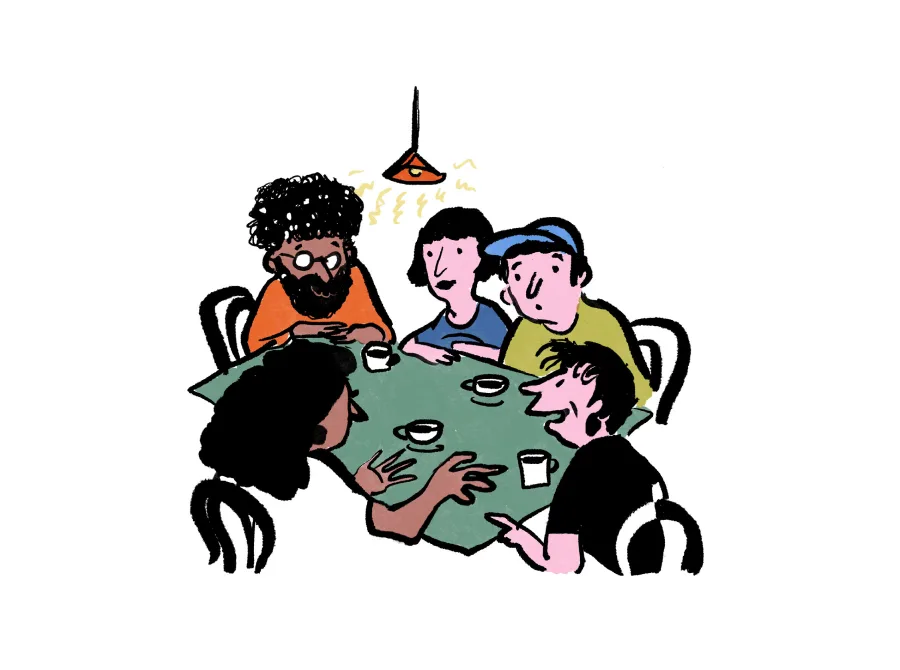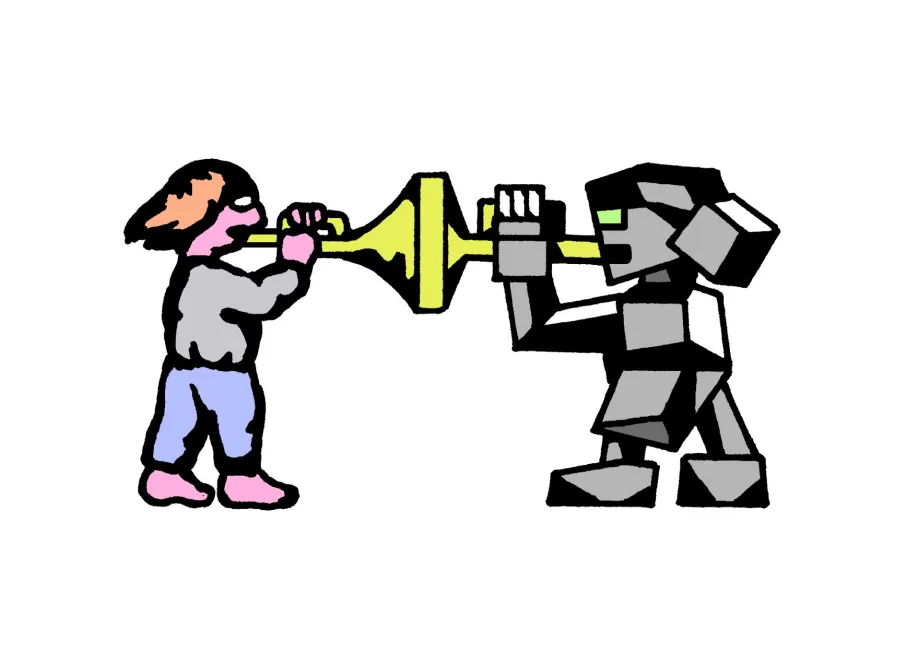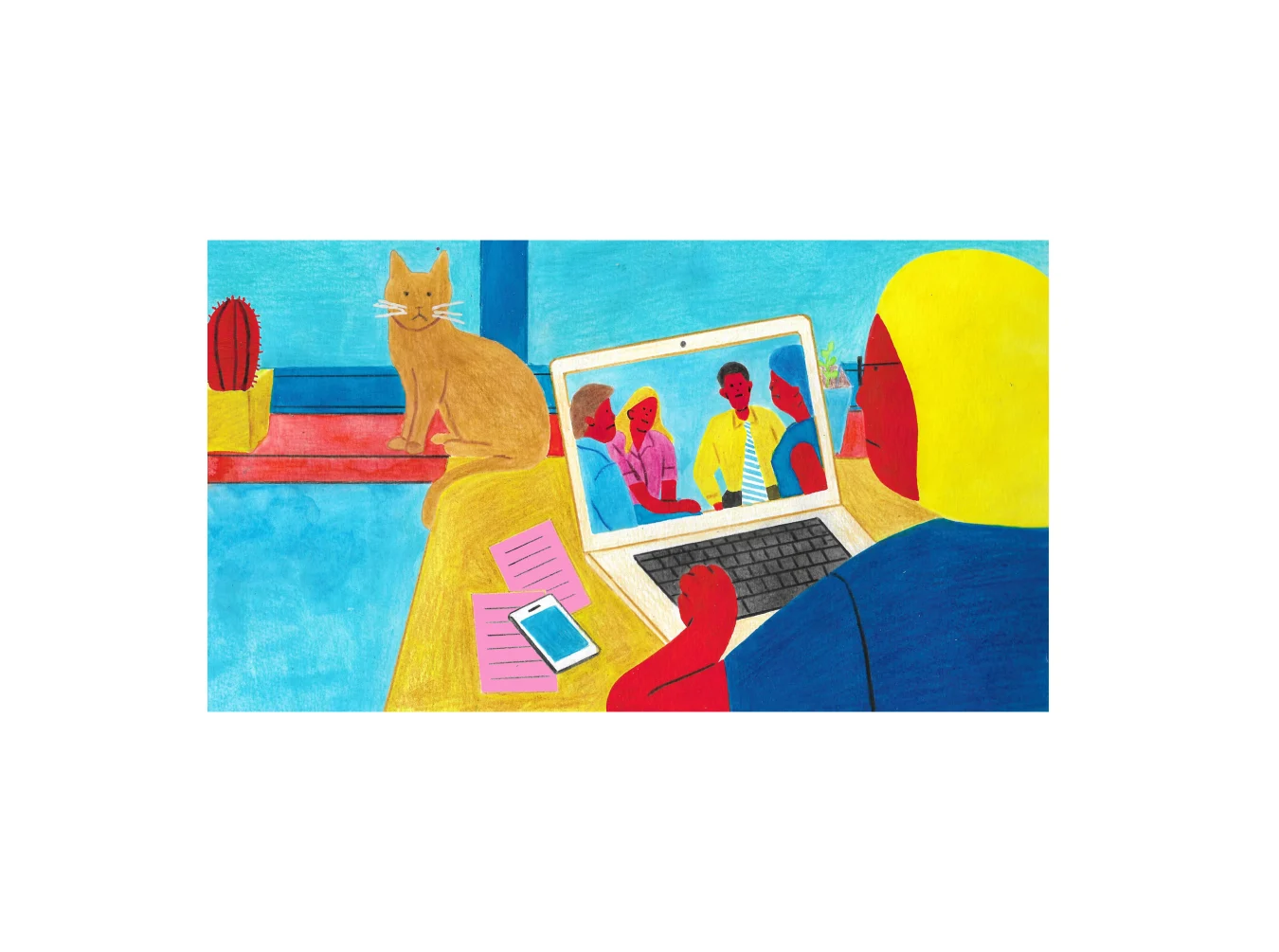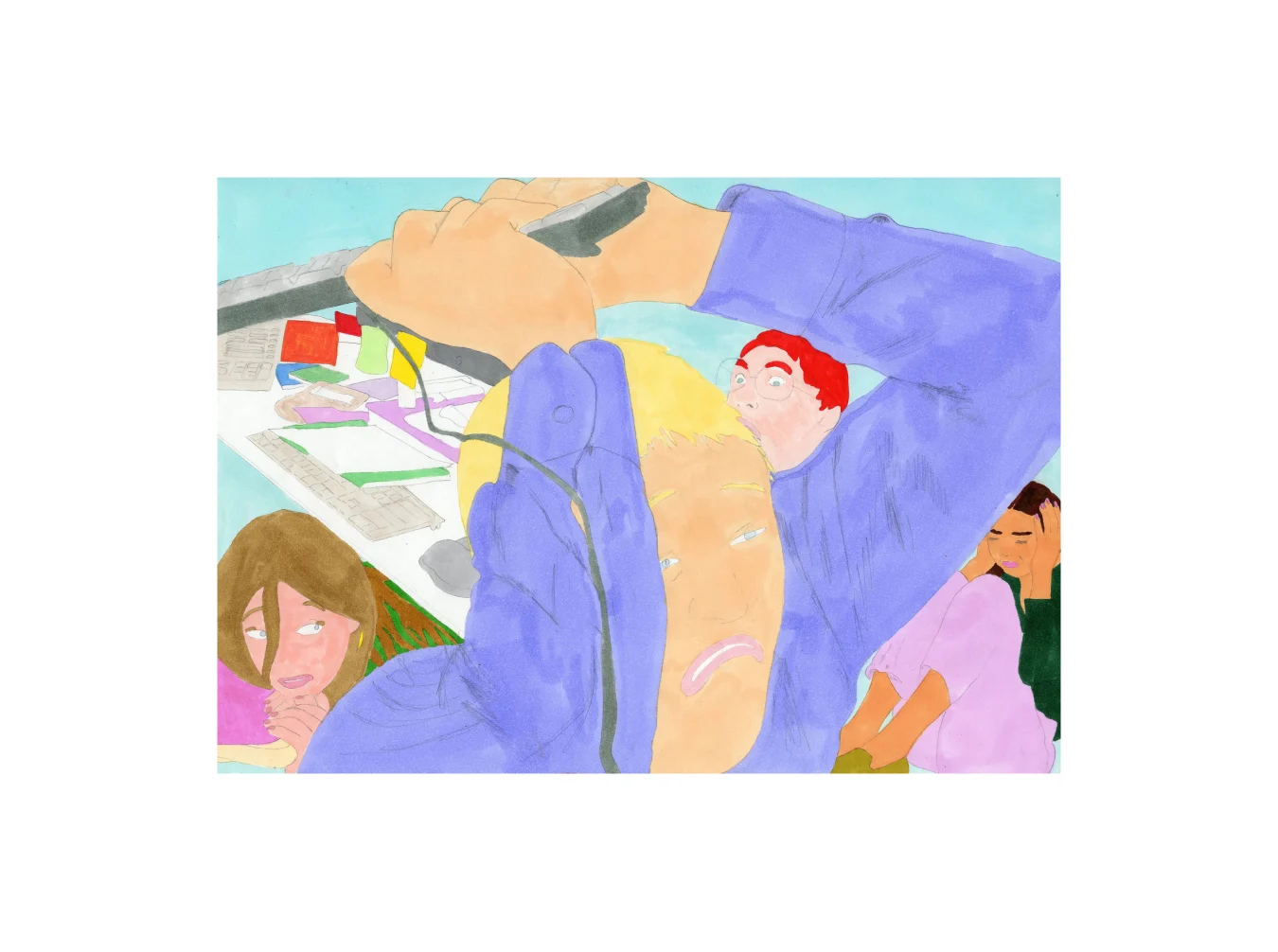
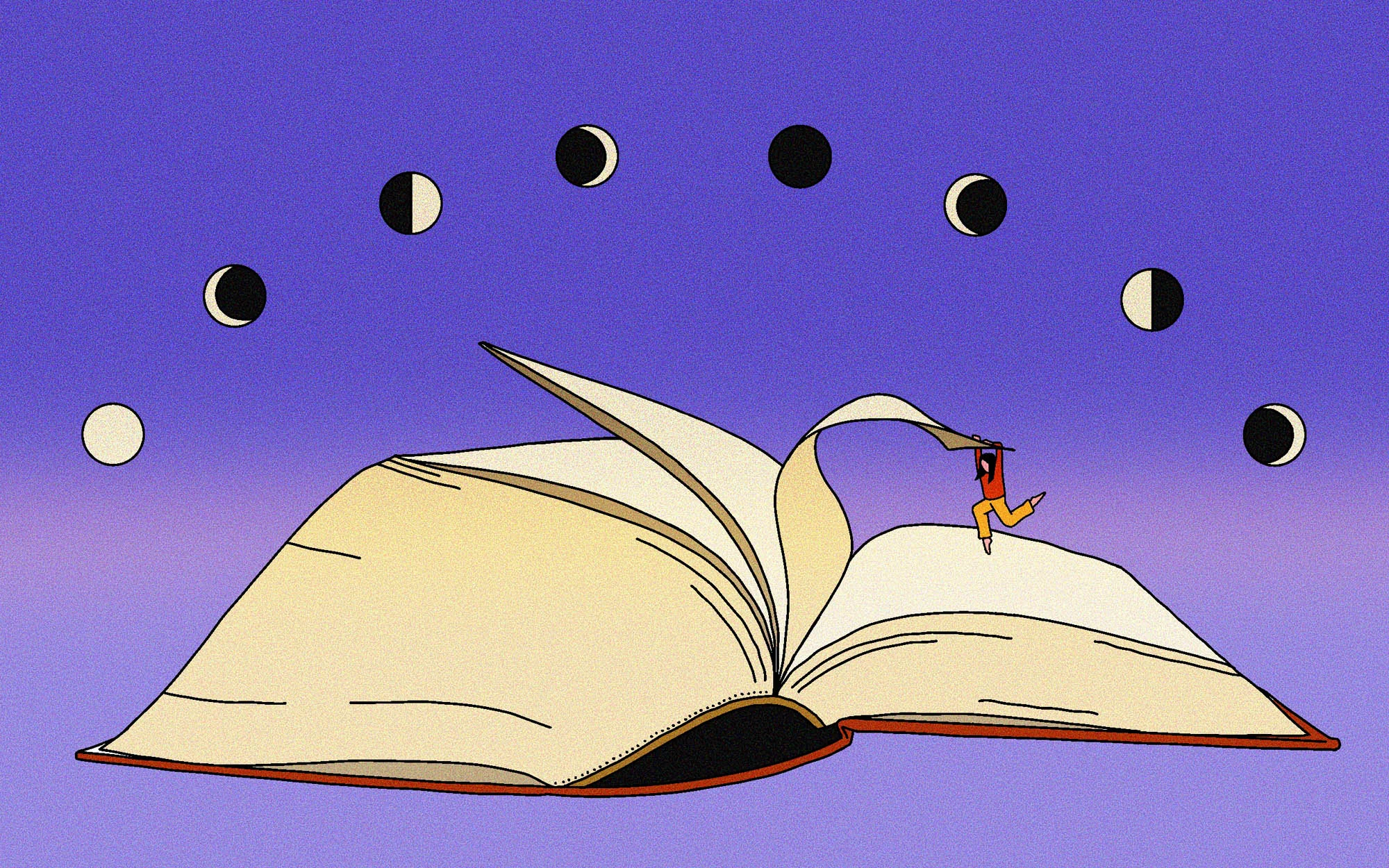
It’s said that everyone has one book in them. But as a working writer with plenty of author friends, James Cartwright has decided to not bother. The process is long-winded and risky and, unless you have an agent, it can be confusing. That shouldn’t put you off, however, if you have a longform ideas you want to communicate to the public. Here, he speaks to experts in the industry about how you can go about getting your master tome out into the world.
Illustrations by Sunny Wu.
As someone who writes for a living, I get asked fairly often if I’ve got a novel in me, or at the very least if I’ve thought about writing a book. The answer is usually no. I’ve thought about it, sure, but then I recall friends who have done it and the years they’ve spent shackled to desks, poring over first drafts, second drafts, reams of edits, before finally re-emerging into the world as published authors, usually just a little bit broken. I’ve edited a few books, too, which means I’ve subjected others to all those revisions and editing, and I’d rather not have to taste my own medicine, thanks all the same. Then I change my mind.
All books demand a kind of dogged commitment to bring them into the world, and whether you’re putting together a photo book about nordic fishing or a 400-page polemic against the current political system, the process from pitch to publication runs a similar course. Despite the workload, it’s not a process often rewarded with a big pay-check at the end; “depictions of authorship in popular culture might give people an inflated idea of how much money normal book authors make,” says author and editorial director at Chronicle Books, Bridget Watson Payne. “Most authors I know also have jobs. They’re not supporting themselves as authors alone.”

80 percent of books sell less than 100 copies. Long gone are the days when you write a book, get a huge advance and millions of sales on top of that.
And that’s because most books don’t sell. “80 percent of books sell less than 100 copies,” says head of Rough Trade Books, Nina Hervé. “Long gone are the days when you write a book, get a huge advance and millions of sales on top of that. We don’t offer advances; our deal is the same with everyone… a 50/50 split after costs.”
If not financial, then there are rewards to be found elsewhere: in the satisfaction of having created something bigger than the sum of its parts; in the opportunity to work with a team of talented people on a singular creative endeavor; in the chance to get your perspective on the world out and in front of a wide audience; maybe even just in the ego trip of telling people you’re a “published author”.
And yes, if you make something commercially viable, then there might be a bit of money coming your way too. “The advance isn’t the whole story,” says Bridget. “If a book does well, more money will come later, in the form of royalties.” Or, if it’s the right kind of book, maybe the film or TV rights might be bought for development. But ‘later’ is the watchword when it comes to books, because this is an industry that still moves slowly.
Publishing is one of the last truly slow industries and this can be a shock to anyone used to working in any industry where things move faster
“Publishing is one of the last truly slow industries,” says Bridget, “and this can be a shock to anyone used to working in any industry where things move faster (which is just about all of them). Typically, it’s 18 months to 2 years, and sometimes longer, from initial pitch to holding a finished book in your hands. And there’s really no reason that someone who hasn’t done it before would know that.”
Not all publishers move quite so slowly. “One of the things I wanted to do differently was to be quick,” says Nina, “to get stuff out there finding readers fast.” To that end, Rough Trade Books’ main output comes in the form of pamphlets as well as long-form works of fiction and non-fiction. “Two years from a book being accepted to publication date just seems madness to me,” she says.
But the more time Nina’s spent in the industry, the more it’s become clear that the slow pace isn’t about people dragging their feet, it’s about making sure a book is released at a time and in a manner that attracts the most attention. The timelines that publicists need for reviews, the big press slots and various awards all affect how long a lead time is needed to publish a book well.
“All of that time is being used, to make sure you end up with something of the highest quality,” says Bridget. “But still, I get it—it’s a long time!”

So now you know it’s going to be slow and you won’t be a millionaire when it’s done. If producing a book still floats your boat then how exactly should you begin? Aside from coming up with a great idea (which I really can’t help you with), your first port of call is to get in a bookshop and pick up some books.
“Go to the physical bookstore and find books that vibe with the book you want to write,” says Bridget. “Same genre. Same sensibility. Same kind of cover design. Same kind of great placement on the ‘new nonfiction’ table at the front of the store that you fantasize about for your book. Whatever it is, find the books that are doing the things you most want your book to do. Then flip to the back of those books.
“If the author is a nice person, they will have thanked their agent and their editor in their acknowledgements. Start making a list of those names. As you accumulate your list, you may even start to see the same people cropping up multiple times. Those are your people.”
There are some publishers who won’t work with talent that isn’t represented by an agent, others who are less picky about how that process works. But you definitely can’t publish a book without an editor, and finding the right editor is an important step to get right. You’re looking for someone whose work you admire, whose ideas you think you gel with, and ideally someone you’ll be happy working alongside for at least a couple of years. It’s important then not to bullshit at all when you pitch your work to an editor. “Just be cool,” says Nina. “Be yourself. I think most of the decisions I make [about who to work with] are based more on that than commercial or academic concerns.”
Be yourself. I think most of the decisions I make [about who to work with] are based more on that than commercial or academic concerns.
And remember, as Bridget says, it’s not all about taste. “Just like there’s the pop culture fantasy of the fabulously wealthy author in the big New York apartment, I think there’s a pop culture fantasy of the book editor with infallibly fabulous taste. Everything she likes is solid gold and if she hates something it’s terrible. And I mean a) that’s ridiculous, because all editors have hits and misses, but, b) as an editor, if you’re doing your job well, it’s honestly a relatively small proportion of your decision-making matrix – there are so many other important factors that need to be weighed in the balance as well.”
If you think an editor only publishes a specific type of work it may still be worth sending your pitch their way, not only to account for their wide-ranging taste, but because pitching is also a numbers game. The vast majority of pitches received by publishers never see the light of day, and those that do have likely been pitched to a wide variety of publishers. Nina has never published a book pitched by an agent, and in her career as an author, Bridget has been rejected countless times.
The profit margins in book publishing are notoriously slim, meaning that every book that goes to market is a gamble for the publisher. As a result they have to be picky about each title they choose and go through a lengthy process before the rights to the book are purchased.

“If I have a project that I like, I take it first to an editorial meeting to discuss informally with colleagues, then to a Board Meeting for formal greenlighting,” explains Bridget of Chronicle’s process. “Then I make an offer and negotiate a deal. Then we do a contract.” And that’s all before a single word is written.
This pre-writing phase is also where your idea will be refined, finessed, and perhaps quite drastically changed to make it fit for the publisher’s audience. This can be a light-touch process or quite a hands-on reinvention of your pitch, so be prepared to be flexible about adjusting the scope and scale of your work. Of course at this stage, if the fit doesn’t feel right and your idea becomes unrecognizable, there’s still time to walk away and find another publisher. Until a contract is signed, those ideas still belong to you.
Let’s say you’re happy with the deal though, back to Bridget: “Then we do a contract. Then the author writes their manuscript and, since I work on art books, in many cases creates artwork. I do a developmental editorial pass on that. Then we do a copy edit. Then we do several rounds of layouts, called galleys, making corrections at each round. It’s usually proofread twice in galleys. Then we do color-accurate proofs for the artwork. Then we get early advance copies of the book. (Books! Yay!) Then we enter the promotion cycle of marketing and publicity.”

The publicity cycle is a whole new world to adjust to if you’re someone who spends most of their time glued to books and computers. There may be signings, readings, interviews, television and radio appearances and a whole host of other public-facing commitments to fulfill, all of which ideally should be clearly specified in your contract. The length of time the publicity run lasts will depend on your publisher and the perceived appeal of your book. “We’re often promoting publications long after their pub date,” says Nina, “as I’m a believer in longevity, rather than just the allocated two weeks just after release that you see with some of the bigger publishers.”
Increasingly, though not always, an author’s experience of being public-facing is a consideration for publishers before they agree to commit to a publication. If you already have a good public presence, a solid following on social media and are accustomed to self-promotion, that’s going to make you much more attractive (remember it’s a numbers game). In 2018 I pitched a book to a mainstream publisher that was flatly rejected because “you’re not a name”. Which is fair.
And that’s the long and the short of it; pitch, publication and promotion. If none of this sounds appealing there’s always the option of self-publishing (which is what I did with my rejected book and have done with several photobooks over the years). But (and this is a BIG BUT) if you self-publish you’ll just have to do everything that’s been detailed in this article on your own. No editors, agents, publicists, project managers or any other experienced team members. Just you on your own with your big idea for a book. We can cover all that in another article some other time.





